Only 20% of the mined diamonds are used for jewellery. The rest is used in industry. The world's most significant diamond mines are in Australia, Angola, Brazil, Zaire, India, Venezuela, Indonesia, Namibia, the USA, Tanzania, South Africa, and the Ural and Yakutia. The most valued diamonds in the world are colorless transparent specimens or stones with a slightly bluish tint. About how diamonds are made you can read here.
THE HISTORY OF DIAMOND GRINDING
It just so happens that we women owe the possibility of having beautiful jewellery with diamonds at the base exclusively to men. They invented the method of processing as well as the types of cuts ... or maybe it was because hundreds of years ago women were not allowed to participate in such professions? :) Anyway, they did these notorious things guided by their curiosity, craftsmanship, and sometimes the desire to impress the sovereigns.
The polishing of diamonds dates back to the Middle Ages. At that time, the Hindu Mughals had a monopoly on the extraction of large diamonds, but it was forbidden to export the largest diamonds mined from the country. Then goldsmiths began to create pendants, consisting of perfectly matched smaller stones, forming one large diamond gem. This work was rated extremely high due to the time and difficulty of its execution. The highest perfection in this type of product is considered to be a pendant with a diamond rosette, kept in the treasury of Saxon electors in Dresden - the largest collection of precious gems in Europe.
On the other hand, in Europe, around 1400, in the goldsmith's guilds, stones prepared by grinders appeared with a sheet with a sawn top. The lower, sharp point of diamond nugget was also slightly sawn. As a result of these operations, a small pane has developed - the so-called collet. Over the next centuries, the art of shaping these hardest stones developed. During the grinding of other parts of the mineral, smaller surfaces - called facets- have been made.
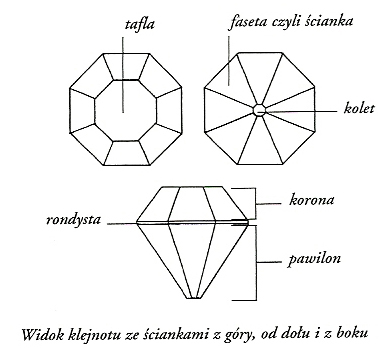
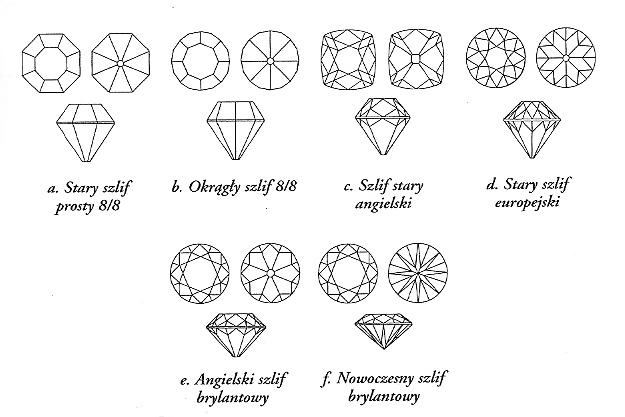
The stone in the first diamond cut had 18 facets. The next step in developing the cuts was double faceting. It consisted of shaping 34 facets. As a result of creating such a large number of facets, the stone acquires an almost round shape. This idea is attributed to Cardinal Mazarini (circa 1650), a great lover of richly decorated jewels, hence this cut is called "Mazarin cut”. At the end of the 17th century, Vincenzo Peruzzi, a grinder working in Venice, developed the triple faceting method, dividing the diamond into 58 facets. Such a stone shines beautifully. Due to the imperfection of the tools, it is not yet perfectly round and symmetrical, but it is already the beginning of the brilliant cut. It was called "Peruzzi's cut".
Over the years, this cut was continuously perfected until the beginning of 20th century, and in 1910 a full brilliant cut was developed. Correctly cut with a brilliant cut, DIAMOND seems to eradiate light, plays with many colors, remaining transparent, like a drop of water. This is how it gets its name: DIAMOND.
OTHER STONE CUTS
A brilliant cut is a cut that brings out the light of a diamond in the most beautiful way, but it is also used for processing other gemstones. There are also many other grinding methods used to bring out the beauty of colored gemstones.
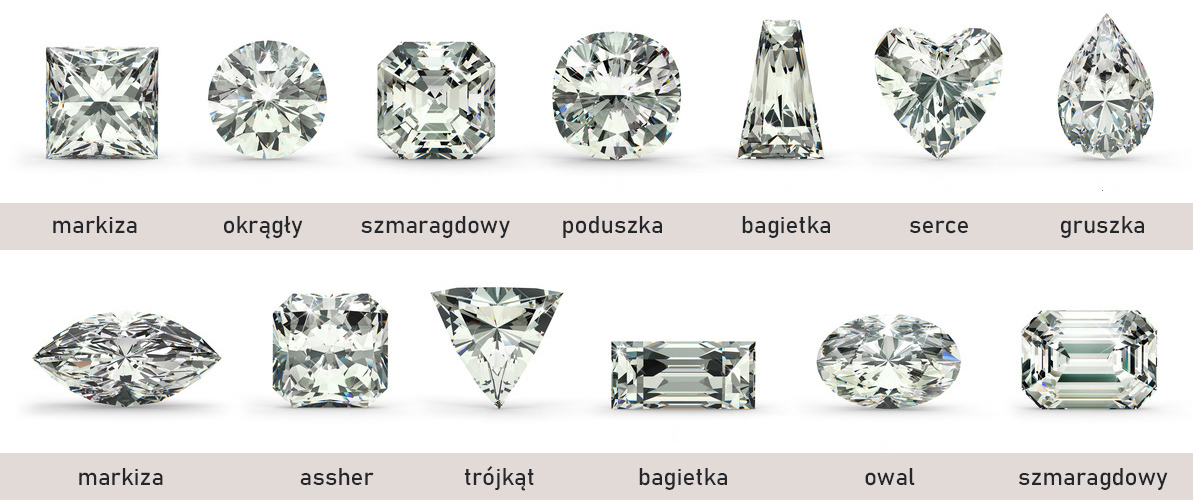
FAMOUS DIAMONDS
There are many so-called "historical diamonds". Among them there are the most beautiful diamonds in the world, but also the largest ones. Famous diamonds often have a rich and mysterious history to ignite the imagination. One of such stones is considered to be the outstanding Indian Koh-i-noor diamond, translated "Mountain of Light". The place of its extraction has not been established yet, but it is certain that it was found in India, because until the 13th century diamonds were only mined there. Hindus believe that this stone fell into the hands of people directly from the gods. Initially, it probably weighed 600 carats.
One of its first owners was the founder of the Mughal dynasty. Later, the stone passed from hand to hand until it was in the hands of the conqueror of India, the Persian Shah Nadir. Since then, the diamond has constantly changed its owners, until in 1849 it passed into the hands of representatives of the East India Company. In 1850, Count Dalhousie donated Koh-i-noor to Queen Victoria, and two years later, in 1852, its original shape of an irregular rosette was modernized by the cutter Voorsanger of the jewelry company Coster. As a result, it lost over 40% of its original weight! The 186 carat jewel was used to create an oval, flat diamond weighing 108.9 carat.
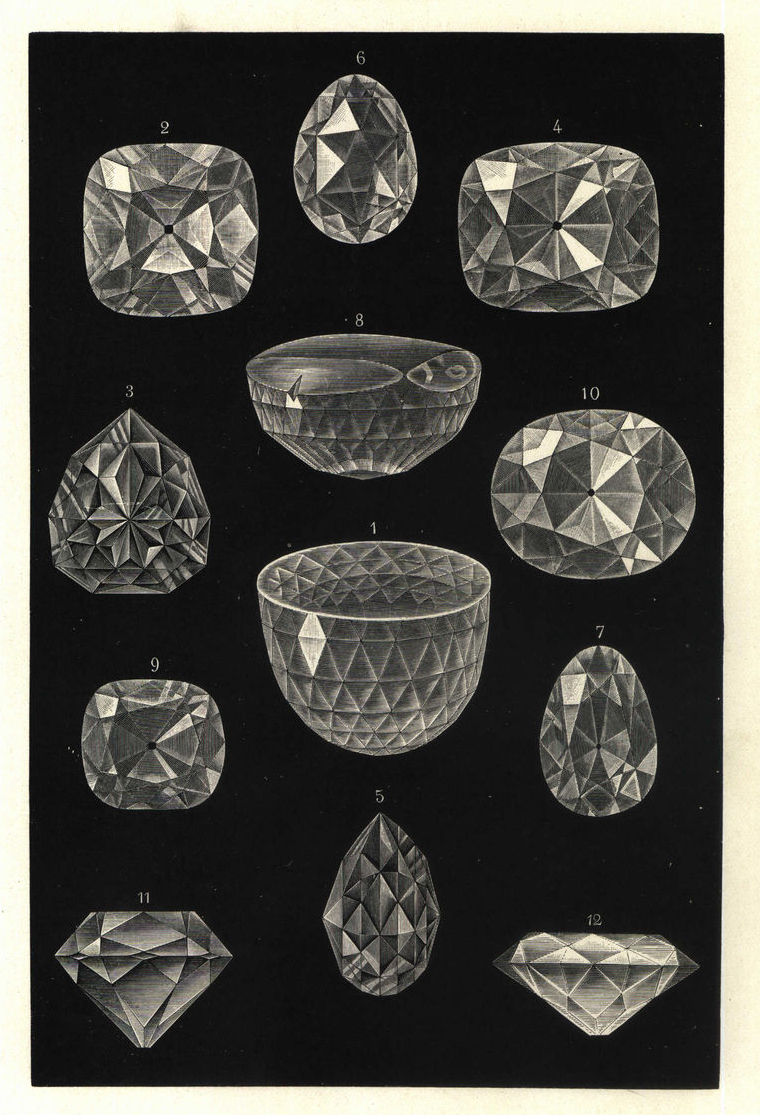
Picture with famous diamonds: 1- Great Mogul (also Orlov is the same) 2 and 11- Regent, 3 and 5- Florentine, 4 and 12- South Star, 6- Sancy, 7- Dresden green diamond, 8- Koh-i- noor (in the original cut, which it was in until 1852), 9- Hope, 10- Koh-i-noor (modern cut).
One of the most beautiful diamonds in the world is "Orlov", also known as "The Great Mogul". It is one of the largest diamonds and is one of the most valuable gemstones ever mined in India. The diamond, found at the beginning of the 17th century, weighed about 300 carats. According to one legend, "Orlov" was one of the diamonds intended to be used as the eyes of the statue of Brachma. Later, the stone belonged to Nadir-shah. After his death, the diamond went to Amsterdam, where it was purchased from the Armenian merchant Ivan Lazariev for 400,000 rubles. The new buyer turned out to be Count Grigory Orlov, who donated this extraordinary gem to Empress Catherine II. To this day, an unusual, faceted in the shape of a tall "Indian Rose" diamond adorns the imperial scepter. It is stored in the Diamond Fund of Russia.
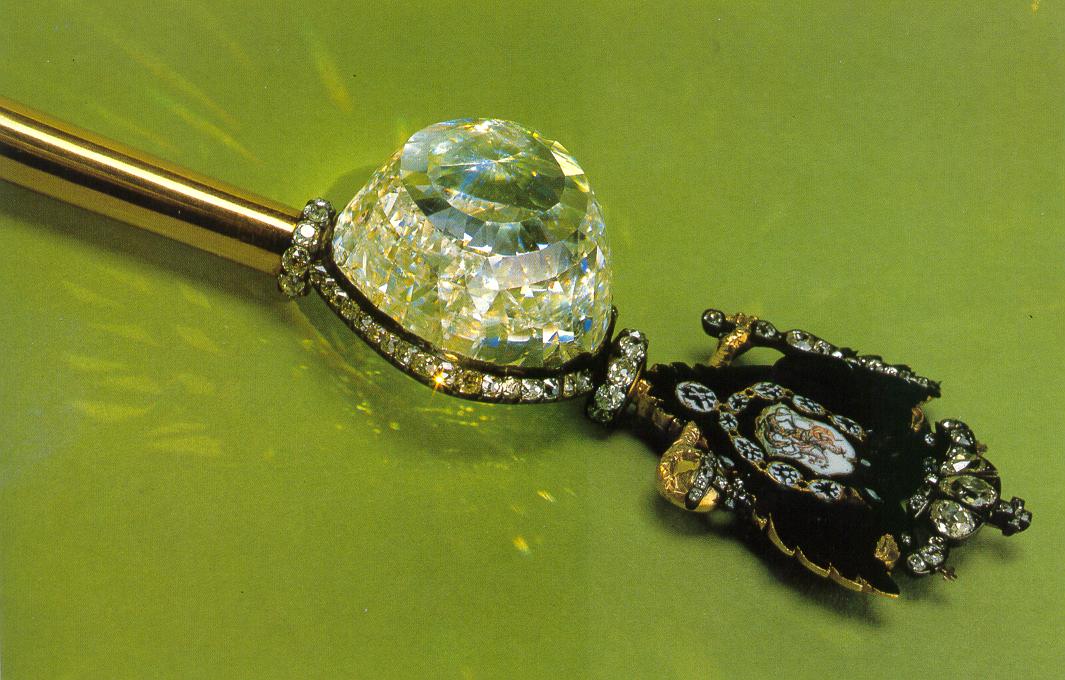
Interestingly, a similar story concerns another "Orlov" - one of the largest black diamonds. It is also a great famous diamond. By comparing the two tales, we can trace that a white diamond was found in India in the 17th century, and a black diamond has been in circulation since the 19th century. As for the Brachma / Buddha statue, it is probably a romantic story with both diamonds. It is said that this statue had many eyes, although cultural historians believe that Hindus would never choose to put a black stone in the statue of a god precisely because of its color.
The largest diamond is considered to be "Cullinan", its weight was 3106 carats. The great famous diamond was found by accident in 1905 by a mining inspector in South Africa. In 1907, the government of Transvaal (now South African territory) donated the stone to King Edward VII. He commissioned it to be divided and polished by Amsterdam grinders. Joseph Asscher made a masterful cut, thanks to which 9 huge stones and 96 smaller ones were obtained from the solid. Three grinders sanded the obtained material for eight months. The weight of the largest of these diamonds - the "Great Star of Africa" - is 530 carats and was placed in the head of the royal scepter. The second largest diamond - "Little Star of Africa" - "Cullinian II" weighing 317 carats - adorns the crown of the British Empire to this day. Cullinian I was ranked number one as the largest cut diamond in 80 years. In 1985, the "Golden Jubilee" was discovered weighing 755 carats, which after grinding gained a mass of 545.67 carats. In this way, the yellow jewel in the cushion cut took first place in terms of weight. Cullinan, however, remained the largest in the cut of a pear and the most impressive with such exceptional parameters as, for example, the color of class D.
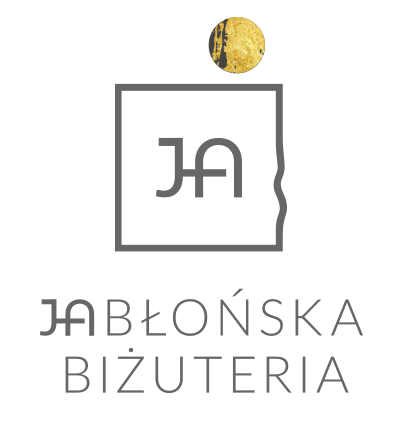
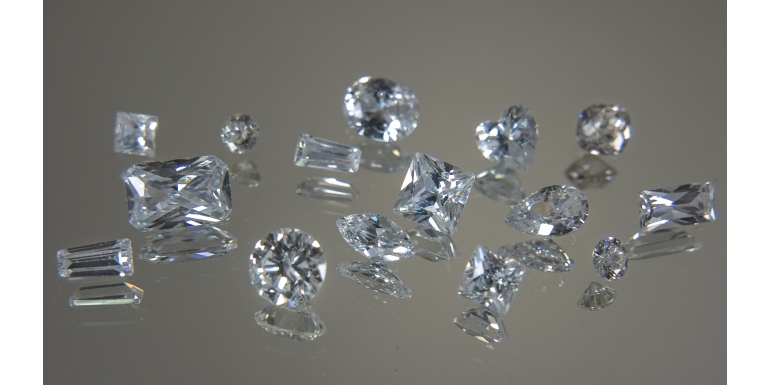



Follow us